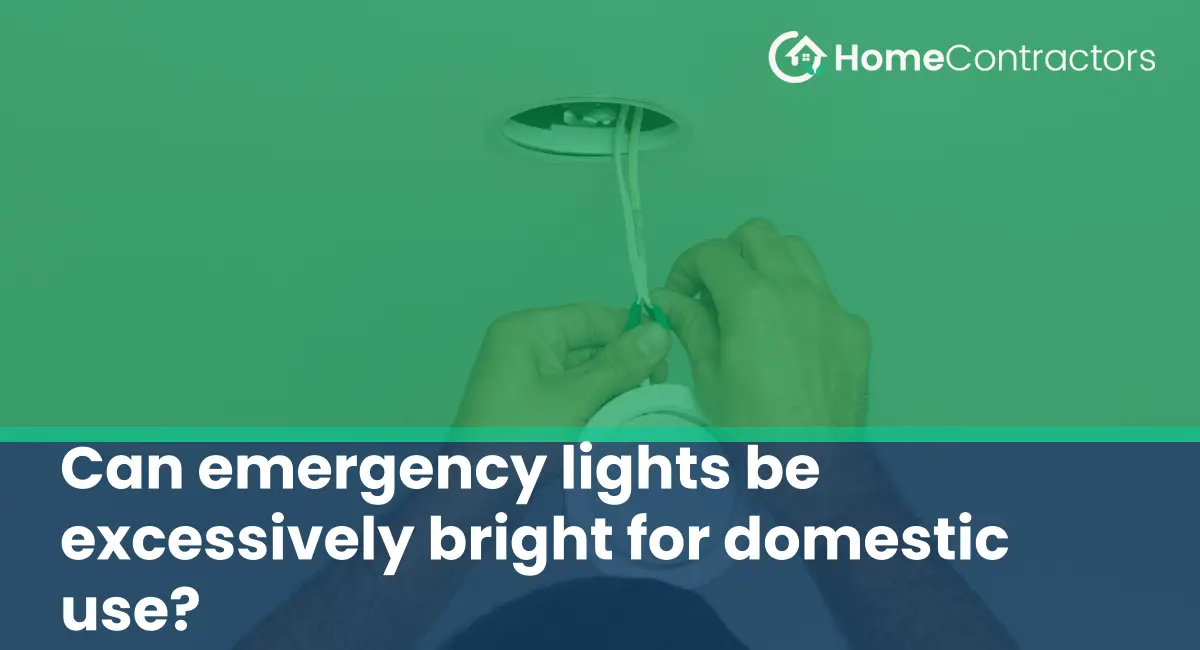Emergency lights play a critical role in ensuring safety during power outages or other emergencies. They provide illumination when regular lighting systems fail, enabling people to navigate their surroundings and locate emergency exits. However, the brightness of these lights can sometimes become a concern, especially when used within domestic settings. This article will delve deeper into the topic and explore whether emergency lights can be excessively bright for domestic use.
Understanding Emergency Lights
Emergency lights are designed to provide ample illumination in emergency situations. They typically use energy-efficient LED technology, which offers brighter light output compared to traditional incandescent bulbs. These lights often feature high brightness levels to ensure visibility in adverse conditions, such as smoke-filled spaces or during nighttime blackouts.
Challenges of Bright Emergency Lights in Domestic Settings
While the brightness of emergency lights is undoubtedly beneficial in certain emergency scenarios, it can be problematic in domestic settings. Here are some challenges associated with excessively bright emergency lights for home use.
Discomfort and Disturbance
The primary concern with excessively bright emergency lights is the discomfort they can cause to individuals within a domestic environment. Bright lights can be intrusive and cause glare, leading to eye strain and headaches. When used in bedrooms or other areas where people need to relax or sleep, this excessive brightness can disrupt their comfort and overall well-being.
Light Pollution
Another challenge is the potential for light pollution caused by overly bright emergency lights. Light pollution occurs when artificial lights become excessive and spill over into spaces where they are unnecessary or unwanted. This issue is particularly relevant for densely populated areas. The intense brightness of emergency lights may shine through windows, affecting neighbors and creating a disturbance at night.
Distraction and Diminished Visibility
Excessive brightness can also be counterproductive by causing distraction and diminished visibility, particularly in smaller domestic spaces. Overly bright emergency lights can create shadows that impede clear vision and make it difficult for individuals to move around safely. This can be more concerning for vulnerable groups such as the elderly or young children.
Mitigating the Brightness Issue
To balance the benefits of emergency lights with the challenges of excessive brightness, several measures can be taken.
Dimming Options
One possible solution is to include dimming options in emergency lighting systems. Dimmable emergency lights allow users to adjust brightness levels based on their needs, reducing discomfort and mitigating issues related to excessive brightness in domestic spaces.
Proper Placement and Coverage
Strategic placement and coverage of emergency lights can also minimize excessive brightness. By ensuring appropriate positioning of lights, the beam can be directed away from areas where it may disturb or distract individuals. This can be achieved by angling lights towards the floor or walls to create indirect lighting, improving visibility while reducing direct glare.
Regulation and Standards
Regulation and adherence to established standards become crucial in controlling excessive brightness issues. Manufacturers and authorities should work together to develop and enforce guidelines that define suitable brightness levels for different domestic settings. This will ensure that emergency lights meet safety requirements without compromising comfort or becoming too intrusive for household use.
Emergency lights undoubtedly provide crucial support during power outages and other emergencies. However, in domestic settings, excessive brightness can pose challenges such as discomfort, light pollution, distraction, and diminished visibility. By incorporating features like dimming options, implementing proper placement and coverage, and establishing regulations and standards, the brightness issue of emergency lights can be mitigated. Striking a balance between functionality and usability will allow emergency lights to fulfill their purpose while ensuring the comfort and safety of individuals in domestic environments.
